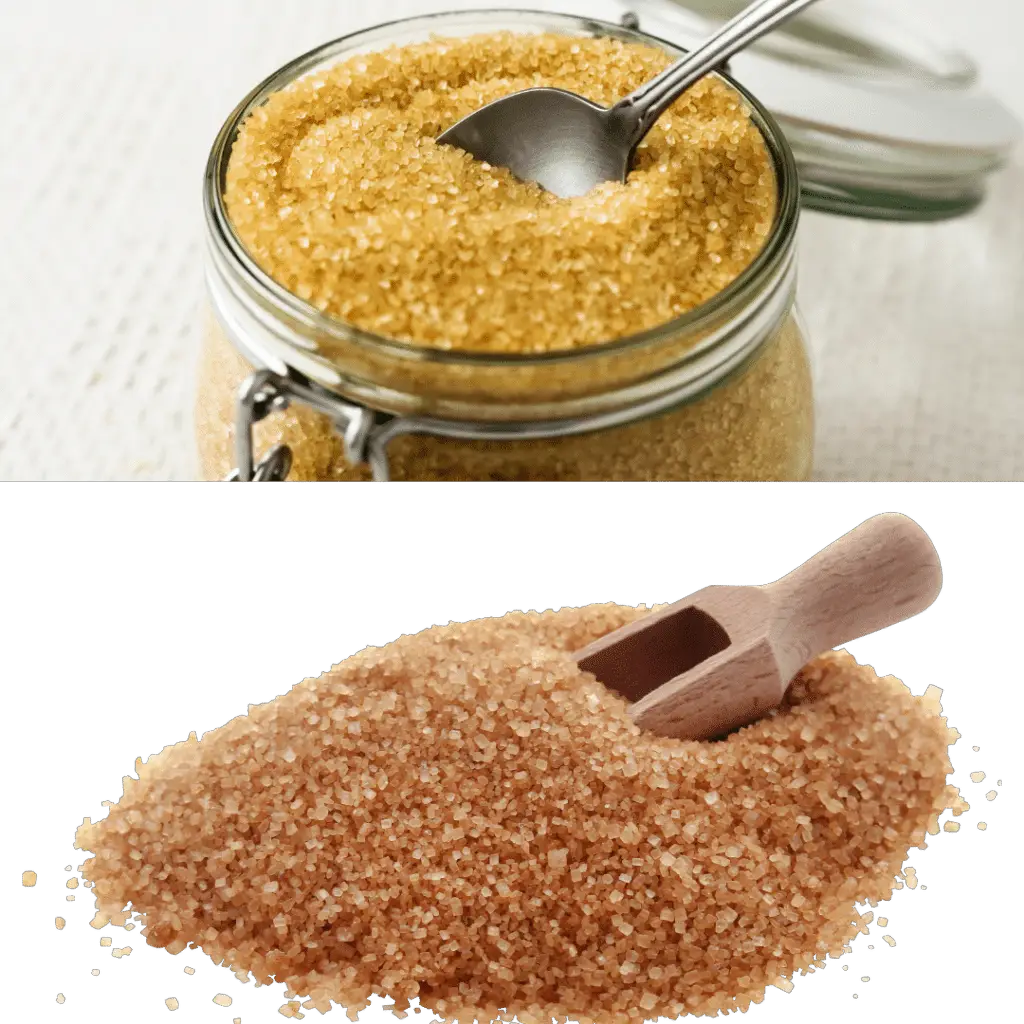In this post, I will compare these two types of brown sugars; Demerara Sugar Vs. Brown Sugar. Most people mistaken demerara to be brown sugar. Although demerara sugar is a type of brown sugar, it’s not precisely the product called brown sugar, which is indeed brown and soft sugar.
In general, demerara sugar has larger crystals as it undergoes minimal processing. It has a distinguishable yellowish-brown color with a mellow flavor. On the other hand, brown sugar has relatively fine crystals and a soft texture.

Demerara Sugar

Brown Sugar
Contents
Demerara Sugar Vs. Brown Sugar: What Are the Differences?
| Demerara | Brown Sugar |
| It is minimally processed and thus retains most of the natural vitamins and minerals from the sugarcane | It’s simply a mixture of white sugar and molasses; thus, it’s less healthy than demerara but healthier than white sugar |
| Features a deep earthy flavor | It is sweeter than demerara |
| Demerara is not moist and has coarse grains, which need more attention if you are to mix it into a dough | It has a moist consistency which makes it a better option to combine into a dough |
| It has a crunchy and coarse texture | It has a soft texture and smaller crystals |
| Has fewer calories than brown sugar. 100grams serving of demerara has 375 kcals | It has more calories than demerara. 100g serving has 380 kcals. |
| It has less distribution of sucrose, standing at 93 percent | It has more sucrose which stands at 94.6 percent |
Demerara Vs. Brown Sugar, Can I Substitute One for the Other?
All the culinary sugars have enough sweetness and you can use any in place of the other without altering the expected outcome.
In the place of demerara and brown sugar, the two differ in appearance and flavor. While you can use to sweeten coffee and oatmeal in the same way you can use brown sugar, you can’t do the same in every recipe that calls for brown sugar.
Demerara has a large grain size and may make it difficult to use it in place of brown sugar in baking. The large grain size may make it difficult to dissolve and affect the final product.
On the other hand, it’s okay to use brown sugar in place of demerara sugar as a table sweetener. The flavor won’t be too distinct as they both contain molasses, and since brown sugar has soft, finer crystals, it won’t have trouble dissolving it. It’s also near impossible that it will affect the final product, thanks to the smaller grain size.
When to use Demerara and when to use Brown Sugar
Both brown sugar and demerara sugar are mainly used in baking. But due to their distinctive features, they are used for different purposes.
Because of its crunchy and large-sized grains, demerara sugar is most suited as a topping on baked goods. It will not dissolve like finer sugars and gives an enticing crunchy texture to baked products. Use demerara sugar in applications that require a crunch, like in biscuits, scones, flapjacks, muffins, and other cakes that crumble.
Comparatively, brown sugar is more appropriate while baking sponge cakes, pastries, and biscuits: it lenders a toffee caramel flavor and brown hue due to its soft texture and small-sized crystals.
Conclusion
While it’s a common misconception that demerara is the same as brown sugar, we believe this article has helped you understand their differences.
Even though the two sugars may look similar, they are not, and their differences should be considered while using them. Demerara is coarse and has larger crystals, while brown sugar is soft and has fine crystals.
Read more on our blog:

2 thoughts on “Demerara Sugar Vs. Brown Sugar”